
Batman is a 1989 superhero film based on the DC Comics character of the same name, created by Bob Kane and Bill Finger. Directed by Tim Burton, it is the first installment of Warner Bros.' initial Batman film series. The film was produced by Jon Peters and Peter Guber and stars Jack Nicholson, Michael Keaton, Kim Basinger, Robert Wuhl, Pat Hingle, Billy Dee Williams, Michael Gough, and Jack Palance. The film takes place early in the title character's war on crime and depicts his conflict with his archenemy The Joker.

Batman Forever is a 1995 American superhero film directed by Joel Schumacher and produced by Tim Burton, based on the DC Comics character Batman by Bob Kane and Bill Finger. The third installment of Warner Bros.' initial Batman film series, it is a stand-alone sequel to Batman Returns starring Val Kilmer, replacing Michael Keaton as Bruce Wayne / Batman, alongside Jim Carrey, Tommy Lee Jones, Nicole Kidman, and Chris O'Donnell, while Michael Gough, and Pat Hingle reprise their roles. The film's story focuses on Batman trying to stop Two-Face and the Riddler in their scheme to extract information from all the minds in Gotham City while adopting an orphaned acrobat named Dick Grayson—who becomes his sidekick, Robin—and developing feelings for psychologist Dr. Chase Meridian.

Pee-wee's Big Adventure is a 1985 American adventure comedy film directed by Tim Burton in his feature-film directing debut. It stars Paul Reubens as Pee-wee Herman, who also co-wrote the screenplay with Phil Hartman and Michael Varhol, along with E.G. Daily, Mark Holton, Diane Salinger, and Judd Omen. Described as a "parody" or "farce version" of the 1948 Italian classic Bicycle Thieves, it tells the story of Pee-wee's nationwide search for his stolen bicycle.
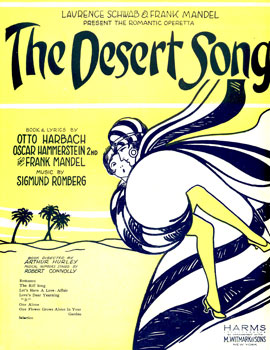
The Desert Song is an operetta with music by Sigmund Romberg and book and lyrics by Oscar Hammerstein II, Otto Harbach and Frank Mandel. It was inspired by the 1925 uprising of the Riffs, a group of Berber fighters, against French colonial rule in Morocco. It was also inspired by stories of Lawrence of Arabia aiding native guerrillas. Many tales romanticizing Saharan North Africa were in vogue, including Beau Geste and The Son of the Sheik.
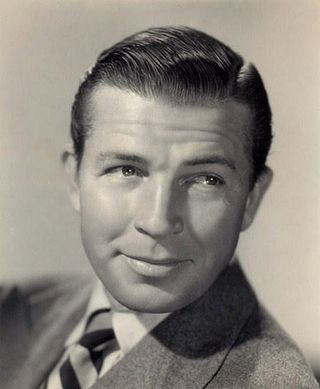
Bruce Cabot was an American film actor, best remembered as Jack Driscoll in King Kong (1933) and for his roles in films such as The Last of the Mohicans (1936), Fritz Lang's Fury (1936), and the Western Dodge City (1939). He was also known as one of "Wayne's Regulars", appearing in a number of John Wayne films beginning with Angel and the Badman (1947), and concluding with Big Jake (1971).
To Have and Have Not is a 1944 American romantic war adventure film directed by Howard Hawks, loosely based on Ernest Hemingway's 1937 novel of the same name. It stars Humphrey Bogart, Walter Brennan and Lauren Bacall; it also features Dolores Moran, Hoagy Carmichael, Sheldon Leonard, Dan Seymour, and Marcel Dalio. The plot, centered on the romance between a freelancing fisherman in Martinique and a beautiful American drifter, is complicated by the growing French resistance in Vichy France.

Dennis Morgan was an American actor-singer. He used the acting pseudonym Richard Stanley before adopting the name under which he gained his greatest fame.

John Boles was an American singer and actor best known for playing Victor Moritz in the 1931 film Frankenstein.
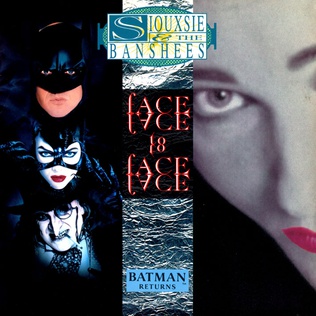
"Face to Face" is a song recorded by English rock band Siouxsie and the Banshees. It was composed by the group along with Danny Elfman and was produced by Stephen Hague. The track was featured in the 1992 film Batman Returns and is included on its soundtrack. Film director Tim Burton asked the band to compose the main song of the movie. The track later appeared on the band 1992's compilation album Twice Upon a Time - The Singles and was remastered in 2002 for The Best of Siouxsie and the Banshees. Upon its release in July 1992, the song entered the singles chart in the UK and in Europe.
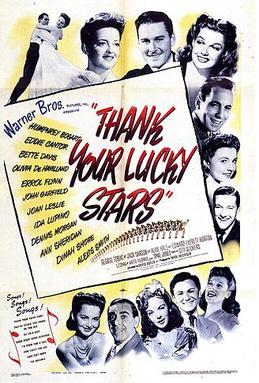
Thank Your Lucky Stars is a 1943 American musical comedy film made by Warner Brothers as a World War II fundraiser, with a slim plot involving theater producers. The stars donated their salaries to the Hollywood Canteen, which was founded by John Garfield and Bette Davis, who appear in this film. It was directed by David Butler and stars Eddie Cantor, Dennis Morgan, Joan Leslie, Edward Everett Horton and S.Z. Sakall.

Fifty Million Frenchmen is a 1931 American pre-Code musical comedy film directed by Lloyd Bacon. It was photographed entirely in Technicolor. The film was produced and released by Warner Brothers, and was based on Cole Porter's 1929 Broadway musical Fifty Million Frenchmen.
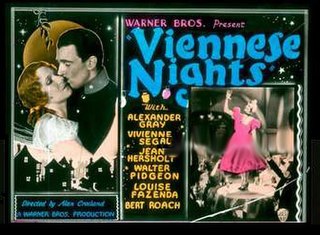
Viennese Nights is a 1930 American all-talking pre-Code musical operetta film directed by Alan Crosland and starring Alexander Gray, Vivienne Segal, Walter Pidgeon, Jean Hersholt, Bela Lugosi and Louise Fazenda. It was photographed entirely in Technicolor and released by Warner Brothers. Viennese Nights was the first original operetta written especially for the screen by Oscar Hammerstein II and Sigmund Romberg. It was filmed in March and April 1930, before anyone realized the extent of the economic hardships that would arrive with the Great Depression, which had begun in the autumn of the previous year. Although not a box office hit in the United States, the film had long box office runs in Britain and Australia. It is one of the earliest sound films to have a short pre-credit sequence.
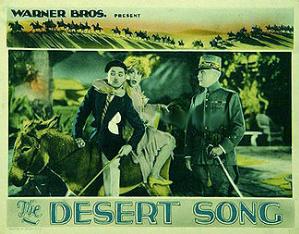
The Desert Song is a 1929 American pre-Code operetta film directed by Roy Del Ruth and starring John Boles, Carlotta King, Louise Fazenda, and Myrna Loy. It was photographed partly in two-color Technicolor, the first film released by Warner Bros. to include footage in color. The film included a 10-minute intermission during which music was played.

Paris is a 1929 American pre-Code musical comedy film, featuring Irène Bordoni. It was filmed with Technicolor sequences: four of the film's ten reels were originally photographed in Technicolor.

Hollywood Canteen is a 1944 American musical romantic comedy film starring Joan Leslie, Robert Hutton, Dane Clark and features many stars in cameo roles. and produced by Warner Bros. The film was written and directed by Delmer Daves and received three Oscar nominations.
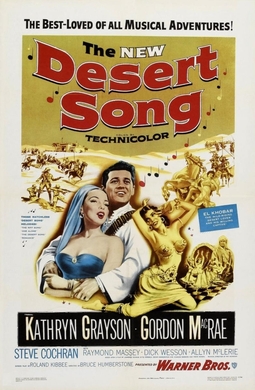
The Desert Song is a 1953 film version in Technicolor of Sigmund Romberg's operetta. It is the third film version of the operetta, the third made by Warner Bros., and the second in full three-strip Technicolor. Although it was released in 1953, it was not made in widescreen; at that time Twentieth-Century Fox held the rights to Cinemascope, which was introduced that year in the film The Robe.

The Desired Woman is a 1927 American silent drama film directed by Michael Curtiz and starring Irene Rich, William Russell and William Collier Jr. It is now considered to be lost. It was produced and distributed by Warner Bros. The film was based on a story by Darryl F. Zanuck, who was credited under the pseudonym Mark Canfield.
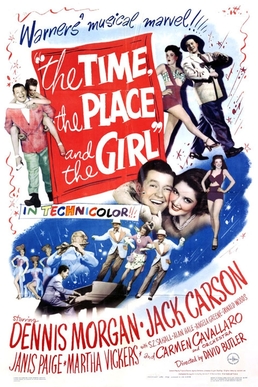
The Time, the Place and the Girl is a 1946 American Technicolor musical comedy film directed by David Butler and starring Dennis Morgan, Jack Carson, Janis Paige and Martha Vickers. The film was produced and distributed by Warner Brothers. It is unrelated to the 1929 film The Time, the Place and the Girl.

Robin Hood of El Dorado is a 1936 American Western film directed by William A. Wellman for MGM. It stars Warner Baxter as real-life Mexican folk hero Joaquin Murrieta and Ann Loring as his love interest, with Bruce Cabot as Bill Warren and J. Carrol Naish as Murrietta's notorious partner, Three-Fingered Jack. The film is based on the life of Murrietta as the Robin Hood of Old California in 1850, a kind, gentle man who is driven to violence.

Shine On, Harvest Moon is a 1944 musical–biographical film about the vaudeville team of Nora Bayes and Jack Norworth, who wrote the popular song "Shine On, Harvest Moon." The film was directed by David Butler and stars Ann Sheridan and Dennis Morgan Sheridan's singing voice was dubbed by Lynn Martin.



















